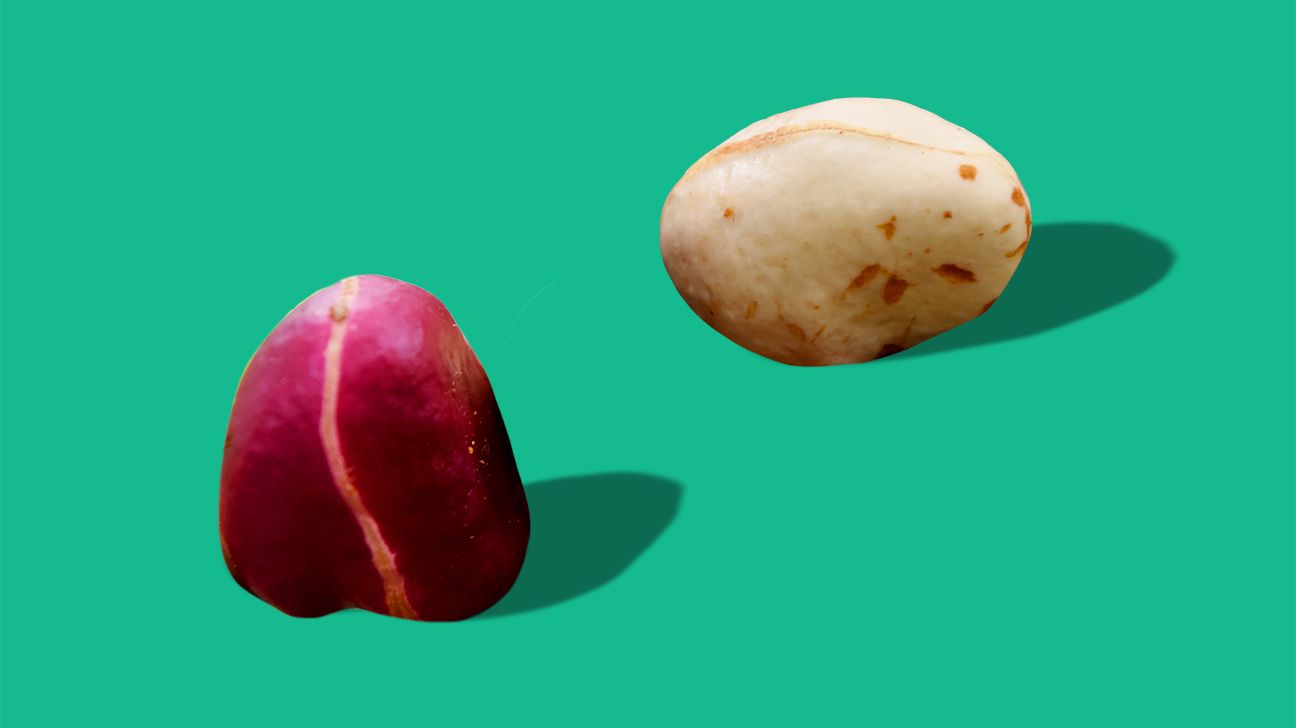The dark brown bubbly beverage beckoning from billboards actually has origins in a West African nut from the kola tree (Cola acuminata and Cola nitida). While Coca-Cola and Pepsi now use synthetic flavors in their sodas, the kola nut is still widely consumed for its caffeine content.
Fast facts
- Kola trees grow in the tropical regions of Africa and the Americas.
- Kola nuts are about the size of a chestnut.
- Some peeps chew kola nuts as a natural stimulant and appetite suppressant.
- The kola nut is considered a cultural symbol in West Africa.
- Kola nuts don’t really taste like soda. They’re described as bitter, but become sweeter as you chew.
Kola nuts are rumored to carry health benefits, but research is super limited. Here’s how it breaks down.
For the Igbo people of Nigeria, kola nuts are prized in cultural practices like community meetings, rites of passage, and ceremonies.
In the Western world, the term “cola” is most familiar as a carbonated soda flavor. Both Coca-Cola and Pepsi-Cola were born as health tonics in the 19th century — with kola nuts in the original recipe. Though less common today, it’s still used as an ingredient in some smaller soda brands.
Kola nuts are traditionally chewed to reduce hunger and fatigue, aid digestion, and remedy hangovers. They can also be dried and boiled to make a tea.
Though fresh kola nuts are widely available for sale in West Africa, in the U.S. you’re more likely to encounter it in the form of an extract.
Sourcing, and safety
According to the U.S. Food and Drug Administration, kola nut extract is safe for human consumption. The American Herbal Products Association (AHPA) requires caffeine warning labels on products containing more than 5 milligrams of caffeine per serving.
Kola fruit, coffee, tea, guarana fruit, yerba mate leaf, and cacao seed require a caffeine label. Only the AHPA follows these labeling guidelines, so you may have to do some homework when sourcing your kola.
You should avoid caffeine-containing products if you’re pregnant or breastfeeding, or are under the age of 18.
With centuries of history as a traditional remedy in West Africa, the kola nut has amassed a long list of uses. Most of the rumored benefits of kola nuts should be considered folklore. Such claims suggest kola nuts:
- “sweetens stale water”
- treats fatigue
- numbs hunger pangs
- heals infections
- treats various skin diseases and ulcers
- relieves toothaches and sore gums
- treats headaches
- eases morning sickness
- aids difficult labor
- regulates menstrual cycles
- improves gastrointestinal health
- boosts mental health
- treats respiratory issues
Some of these health benefits are most likely due to caffeine content, which boosts energy and curbs hunger.
What the science says
While most of the claims listed above are unproven, a few studies have investigated the health impacts of the kola nut.
Anatomy of a kola nut
Kola nuts contain several compounds that could be linked to health benefits, including:
- caffeine
- theobromine
- tannins
- catechins
Here are the highlights of recent research on kola nuts:
Type 2 diabetes
In a 2019 study, rats with type 2 diabetes were given a hot-water extract of kola nut for 6 weeks. After treatment, the rats had lower blood glucose, triglycerides, and LDL cholesterol. Their insulin and “good” cholesterol levels were elevated.
Improved oral health
Because kola nuts are typically chewed, scientists have looked into their effectiveness in preventing cavities and treating oral infections. Research indicates they do have antimicrobial properties that fight dental pathogens and possibly other infections.
Anti-inflammatory
A 2019 study evaluated the anti-inflammatory and analgesic effects the kola nut extract had on rodents. Kola nut extract was associated with reduced swelling, and had pain relieving effects.
Blood pressure
Another study of rats investigated the diuretic effect of kola nuts. Diuretics help treat congestive heart failure, nephritis, hypertension, and pregnancy toxemia.
Researchers found kola nut was an effective diuretic. It increases urine output without causing electrolyte imbalance or damage to the liver and kidneys.
The main active compound in kola nuts is caffeine, it should be limited in the same way caffeinated beverages like coffee, tea, and soda are.
Caffeine is a nervous system stimulant and a diuretic. It also increases stomach acid production, leading to heartburn and stomach upset if consumed in large quantities.
According to the National Institutes of Health Office of Dietary Supplements, caffeine consumption of less than 400 to 500 milligrams per day is safe for adults. That’s equivalent to about 2 to 4 cups of coffee per day.
Watch out for energy drinks with herbal ingredients — they’re not required to list their caffeine content and may contain more than you expect.
Side effects of caffeine use include:
- insomnia
- anxiety
- nervousness
- jitters
- vomiting
- rapid heart rate
- increased blood pressure
- headaches
- dizziness
- dehydration
- dependency
- impaired calcium absorption
Kola nuts have a long history in West African culture as a ceremonial item and a product consumed for stimulant and healthful benefits.
Though it’s no longer used in the big U.S. cola brands, you can find smaller labels that use kola nut as an ingredient.
Kola nuts are a solid source of caffeine. It’s considered safe, but caution should be used with an excessive consumption of caffeinated foods and drinks.
Always do your homework before taking a supplement like kola nut extract since they’re not tested and regulated by the FDA.


